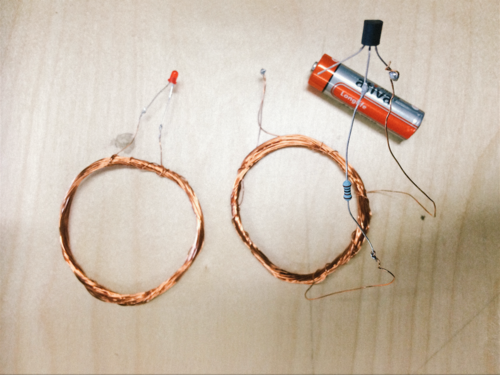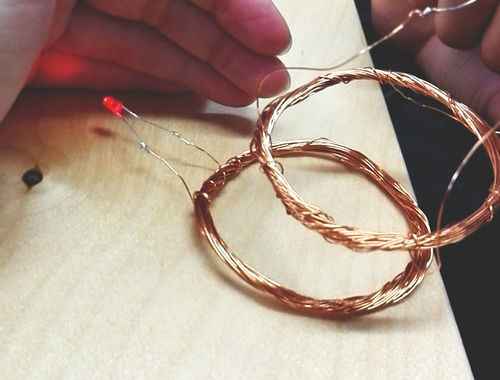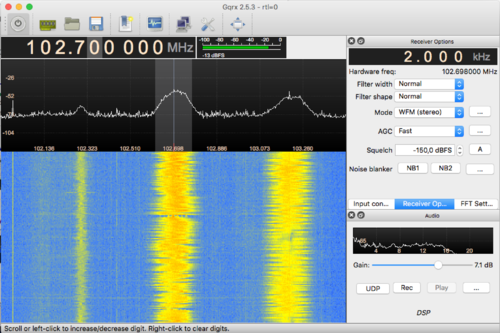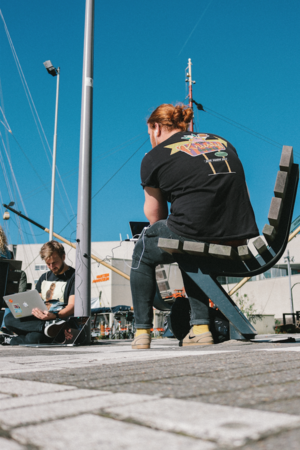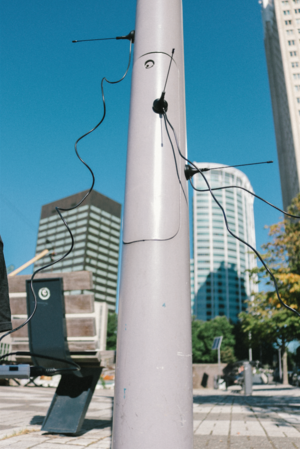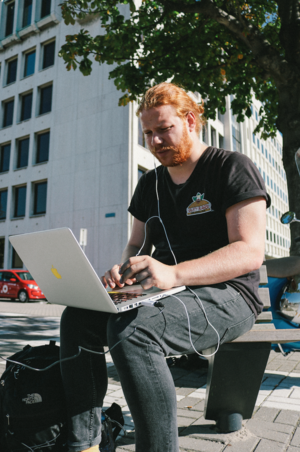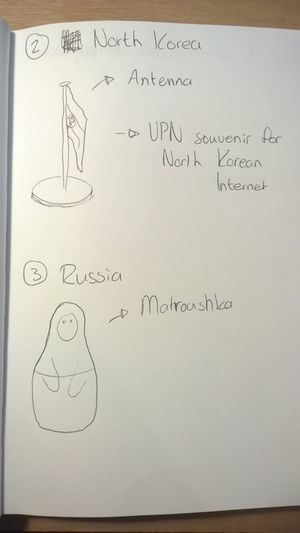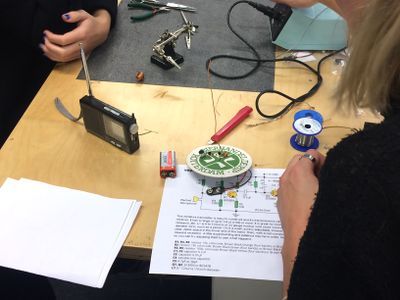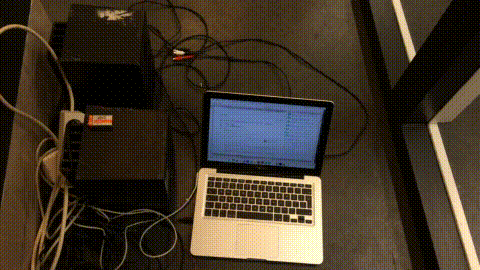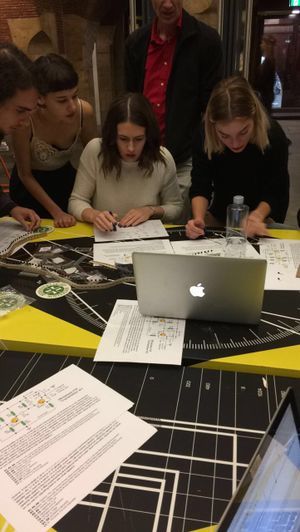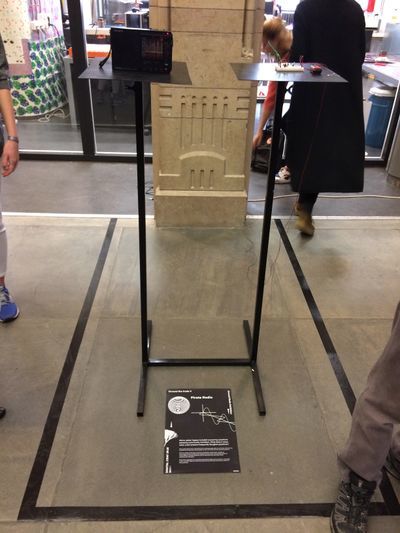Difference between revisions of "User:0902492"
| Line 63: | Line 63: | ||
| − | We had one half of the team focussing on the technical part and building the FM transmitter. The other half of the team focussed on the conceptual side. But we were also talking to other groups and discussing what they were doing and how it would work out if we, let's say, combined certain elements or ideas. As real pirates do we 'stole' something from another team. The Intergalactic team was focussing on sending the most frequent asked questions on Google to outer space. We decided to take their questions and let | + | We had one half of the team focussing on the technical part and building the FM transmitter. The other half of the team focussed on the conceptual side. But we were also talking to other groups and discussing what they were doing and how it would work out if we, let's say, combined certain elements or ideas. As real pirates do we 'stole' something from another team. The Intergalactic team was focussing on sending the most frequent asked questions on Google to outer space. We decided to take their questions and let [//www.manifestation.com/neurotoys/eliza.php3 chatbot ELIZA] answer those questions. |
Revision as of 09:46, 31 October 2016
Contents
Joëlle's Wiki
As a 3rd year graphic design student with a pretty 'commercial' style and mindset in terms of my own design practice, I picked Digital Craft to broaden my horizon. I've done some open aanbod and electives in the Interaction Station before and really liked the technical part of it.
So this quarter it was time to challenge myself some more. I had a few goals in mind:
- experiment with different techniques
- make something physical
- work on coding (Python)
Workshops
I quickly discovered that the workshops were actually a great way to check the first item of my list: experimenting. It isn't just for experimenting with different techniques, but also materials. Like with any experiment the workshops are a trial and error type of thing. Sometimes things are quite easy to pull of but more often they're not. But that makes the satisfaction of getting something to work only bigger.
Wireless LED
This workshop we worked with pretty basic materials as you can tell from the picture. Nevertheless we had some struggles making it work. I worked on it together with Jeroen and Sanne and after double-checking everything and adjusting some things we got it to work.
SDR dongle + Gqrx
Played around with this small device one for quite some time. Setting up the dongle wasn't the hardest part, just plug and play. But finding the right settings with the Gqrx program was a bit more difficult. I first of tried a bunch of things myself, it made me more familiar with the interface and how it worked but I couldn't get a clear signal yet. After some research on Google I managed to listen to the radio (something I don't really do much anymore ever since Spotify).
When I went outside together with Jerry and Mattijn This things became more exciting (again also more difficult). This time we were trying to find some 'private' channels. After quite some time I was suddenly tuned in to what seemed like two truckers talking to each other. I recorded a part of the conversation. Listening to the two making some small talk and gossiping about work was actually pretty entertaining.
Imaginary Radio
For the Imaginary Radio we had to come up with something for the 1800's. We had the idea of placing an installation people could enter in Amsterdam. Inside the installation would be a small projector which would play a recording of Paris on loop. Meanwhile there would be playing live audio imitation the sounds of the video. This way we created some sort of the first '(not-so-)live stream' for that time. People could really experience both visually as well as audibly what it would be like in a foreign city hundreds of kilometers away.
We had to further work on a concept of a different team. Their concept was that a souvenir you took home with you from a different country would be able to unlock certain memories of the place you took it from. We decided to take a matryoshka doll and implement it with a NFC chip. Unfortunately we didn't had one at that point in time, so we decided to use a QR-code instead. It needed to be a bit secretive so we placed a small QR-code on the bottom of the very last matryoshka doll. If you scanned the QR-code you would be taken to Kproxy, a website that offers a free anonymous web proxy service. Through that site you would be taken to a, in this case, Russian security camera in public space which is linked to the place you supposedly bought your matryoshka doll souvenir.
 WdKA meets MICA
WdKA meets MICA 
Pirate Radio. That was our assignment. Did any of us ever build a FM transmitter before? No. Did we knew how it worked? No. Was the site containing information on how to do it in English? Hell no. So it was basically just trying things out, looking at images online and getting some help from the Interaction Station.
We had one half of the team focussing on the technical part and building the FM transmitter. The other half of the team focussed on the conceptual side. But we were also talking to other groups and discussing what they were doing and how it would work out if we, let's say, combined certain elements or ideas. As real pirates do we 'stole' something from another team. The Intergalactic team was focussing on sending the most frequent asked questions on Google to outer space. We decided to take their questions and let chatbot ELIZA answer those questions.
Micro radio stations have a long history of connecting people within communities, often serving as platforms for talk shows where people can call in to a host with their personal questions. With the creation of the Internet and the consolidation of information, people are increasingly turning to online search engines to answer their most personal questions. These platforms provide individuals with the feeling that they have been heard, without human interaction. Pirate Radio aggregates the most frequently asked Google search questions, responding to them using the Rogerian Method (a psychotherapy technique that answers questions with questions).
Micro radios’ legacy included answering questions posed by community members. What does it mean when a bot answers frequently Googled questions? I must say that the overall experience was great and it was cool to see two groups of complete strangers from different countries work so hard together with a limited time frame and make some cool projects.
Personal research
This part of my wiki is basically a collection of interesting things I found online, research, sketches and ideas.
oscilloscope art

